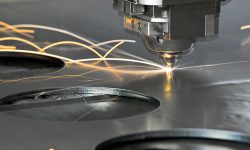Prototypes are of critical importance in the development and production of a wide range of medical devices, including anatomical models, hand-held appliances and larger pieces of equipment.
Here are the five most utilized rapid prototyping methods commonly used to quickly create prototypes for the medical field.
5 Popular Rapid Prototyping Techniques
Here are five methods commonly used to quickly create prototypes for the medical field.
- CNC Machining
CNC machining is a subtractive process that provides a quick way to produce highly accurate, functional prototypes. State-of-the-art, five-axis CNC machining is frequently a cost-effective option for delivering prototypes with complex geometries. It is possible to work with a wide range of materials, including aluminum alloys, stainless steel and hard thermoplastics.
- Clear Acrylic Machining and Polishing
CNC machining of clear acrylic followed by hand, vapor or flame polishing yields prototypes with a high degree of optical clarity. Consider this technique when clarity and dimensional precision are important goals. Clear acrylic machining is ideal for use in the creation of lenses and prisms required in laser instrumentation and other medical devices.
- Aluminum Machining
Using aluminum machining to produce prototypes offers advantages associated working with a low-density, high-strength substance. It is possible to machine aluminum alloys to close tolerances, and polishing can remove slight imperfections to further refine the object.
- RIM (Reaction Injection Molding)
Reaction injection molding (RIM) produces strong, lightweight prototypes with a high-density skin and a lower-density core. The RIM process allows for the production of more intricate prototypes than are possible with traditional injection molding.
Vacuum casting is used to for rapid prototyping of certain medical devices, like heart and other organ models. A master mold is fabricated from laser-etched silicon resin, and an extra-soft resin is used to produce the prototype.
Prototyping Methods for Different Applications
Matching the right technique to a specific need will frequently save you both time and money when you need any of these kinds of prototypes.
- Proof-of-concept — Confirm the viability of designs and engineering.
- Functional — Prototypes that allow manufacturers to analyze relevant mechanical, electrical, thermal and optical qualities.
- Form and fit — Examine the qualities that are important to you, from size and shape to color and texture.
- Life testing — Test lifecycle performance, including fatigue strength and ultraviolet aging.
- Regulatory testing — Prototypes for medical device testing conducted by agencies like the U.S. Food and Drug Administration (FDA) and organizations like Underwriters Laboratories (UL).
Contact Us for Assistance
3ERP’s rapid prototyping services meet the needs of those facing aggressive design-to-market deadlines. Our technical sales team stands ready to advise you on the most cost-effective and efficient rapid prototyping methods for your given medical application. For prompt and professional assistance, please contact us today.







